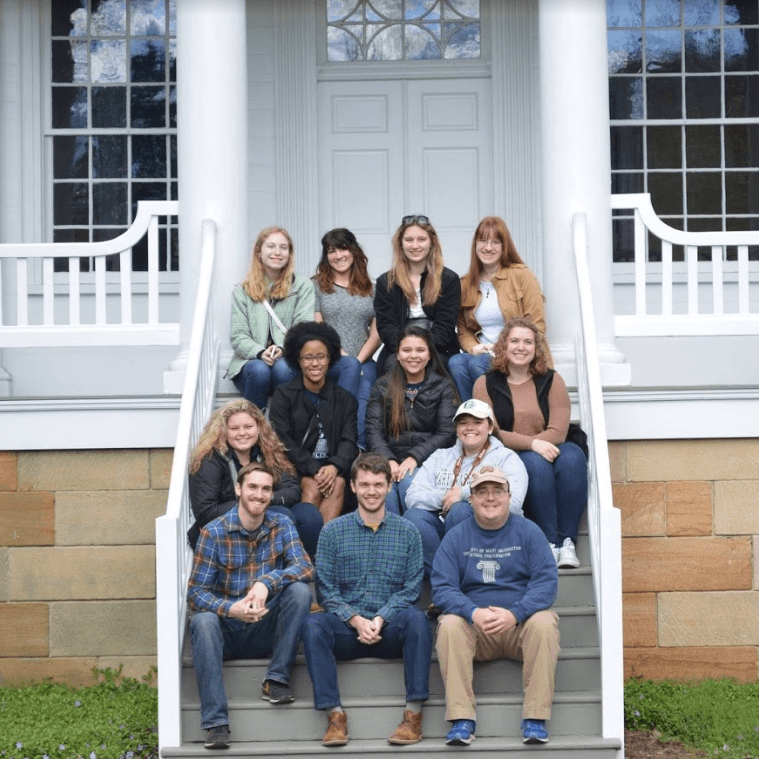Historic Preservation students and faculty take part in important research trips
4 min read
Historic Preservation Club | Facebook
By LAUREN CLOSS
In 2007, Doug Sanford, a professor of historical preservation at the University of Mary Washington, began a two-year project funded by the National Endowment for the Humanities Collaborative Research grant. Along with his colleague Dennis Pogue, a professor at the University of Maryland, Sanford researched and documented 30 former slave residences in Virginia. Since then, the pair has continued their efforts throughout the summers and during the school year with the help of historic preservation majors.
“African American archaeology is a long-term research interest of mine,” Sanford said. “On archaeological sites, we would often encounter evidence of buildings so it just made perfect sense to start studying surviving slave buildings so that we could compare those to what we were seeing archaeologically. My colleague and I have continued to do this and become more organized about it, to both gather this information and to share it with other people, make it available to other researchers, but also as a way to encourage awareness of these buildings and see that they’re talked about and that the issues of slavery are talked about.”
Professor Sanford is currently teaching a slave housing course that made four expeditions to slave dwellings this semester.
“It’s a lot of fun,” said Madeline Fanta, a senior history major and member of the class. “You get to take pictures, you have to make a floor plan, we measure the building and figure out how big it is- interior, exterior, upstairs, downstairs- and we also fill out a survey form which sort of details the details of the building.”
In addition, the types of nails, tool marks and construction techniques are accessed to date the building. Sanford and Pogue also previously used dendrochronology, tree ring dating, to pin down the specific year a dwelling was built.
These results and measurements are then published on vaslavehousing.org. According to the site, the purpose of the project is to “compile information on the domestic architecture of slavery in Virginia. We gather information from archaeological sites, period documents such as census and tax records and surviving buildings in rural and urban settings. Beyond facilitating scholarly research, we encourage public awareness and preservation of slave-related buildings, many of which are in danger of being lost due to neglect or purposeful demolition.”
Busloads of students have traveled to buildings several hours away. Earlier in the semester, students made trips to Pittsylvania County and outside Lexington.
“If you look at the study of slave buildings in Virginia, most of the effort has been placed in Eastern Virginia,” Sanford said. “We’re purposefully looking at other parts of the state that have been less studied, for instance the Shenandoah Valley, or South-Central Virginia.”
The buildings are put on their radar by private landowners, historical societies or preservations groups, previous small-scale architectural surveys or just people in the community with an interest in historic buildings or issues of slavery. They are often helpful in providing some past “historic documents, maps or personal accounts from the plantation owner” that aid in identification of slave dwellings, according to Sanford.
“There are also fire insurance policies that included slave buildings in some cases,” Sanford said. “One of the things we use is the US census in 1860, [which] asked all slave owners how many slave houses they had.”
One challenge associated with documenting surviving historical buildings is determining what has been replaced because if they are still standing it is likely they were used or updated after the civil war.
“We have to become housing detectives to determine what survived from the period of slavery and what came later,” Sanford said. “It’s good training for the students to learn how to recognize different periods of construction and what were the different uses of a building, but then to ultimately get back and say okay here’s what we think the building looked like when it was used as a slave quarter.”
Unfortunately, there are many more slave houses in Virginia than are possible to document before they deteriorate further.
“The reason we’re doing this is because you see all of the buildings that have survived that belonged to the people that owned the slaves, but unfortunately slave buildings were not built to last,” Fanta said. “They were typically made of wood, so that’s why we want to focus on protecting those because they are falling down and the ones we have left- it’s incredible that they’re still standing.”
The ongoing project will be continued by Sanford and Pogue this summer in Shenandoah County, and hopefully next semester in other parts of Virginia. The involvement of students not only provides the man-hours needed to document buildings that would otherwise be accessible only from archaeology, but also the education and experience for their future occupations.
“Right now, we are learning how to identify and protect buildings and archaeological sites and artifacts,” Fanta said. “We’re learning how to make a greater impact.”


